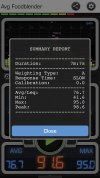Emiyanez
Member
Hi everyone,
I have an Audiophonics stereo Hypex Ncore NC122MP amp feeding a pair of ELAC Uni-Fi UF52. I am getting itchy about upgrading to a more powerful Hypex-based amplifier and I wonder whether there would be an obvious advantage on having the extra punch (apart from the possibility to upgrade to harder to driver speakers).
The speakers have a sensitivity of 85 dB at 2.83 v/1m and a nominal impedance of 6 Ohms. According to this article, the minimal impedance is 5.2 Ohms between 200-600 Hz.
In normal conditions, I have recorded a maximum of 85 dB from my listening position (3 meters from the speakers) but, unfortunately, I do not have a way of measuring the power generated by the amplifier to understand were I sit in the curve. I have seen different online calculators but I have problems understanding the need of headspace or power reserve and how this influences the quality of the reproduction.
Would you recommend upgrading to a more powerful amp (e.g. Hypex Ncore NC252MP)? I do not want to spend the money if there's no reason for it.
Thanks a lot on advance for you help.
Cheers,
Emilio.
I have an Audiophonics stereo Hypex Ncore NC122MP amp feeding a pair of ELAC Uni-Fi UF52. I am getting itchy about upgrading to a more powerful Hypex-based amplifier and I wonder whether there would be an obvious advantage on having the extra punch (apart from the possibility to upgrade to harder to driver speakers).
The speakers have a sensitivity of 85 dB at 2.83 v/1m and a nominal impedance of 6 Ohms. According to this article, the minimal impedance is 5.2 Ohms between 200-600 Hz.
In normal conditions, I have recorded a maximum of 85 dB from my listening position (3 meters from the speakers) but, unfortunately, I do not have a way of measuring the power generated by the amplifier to understand were I sit in the curve. I have seen different online calculators but I have problems understanding the need of headspace or power reserve and how this influences the quality of the reproduction.
Would you recommend upgrading to a more powerful amp (e.g. Hypex Ncore NC252MP)? I do not want to spend the money if there's no reason for it.
Thanks a lot on advance for you help.
Cheers,
Emilio.


